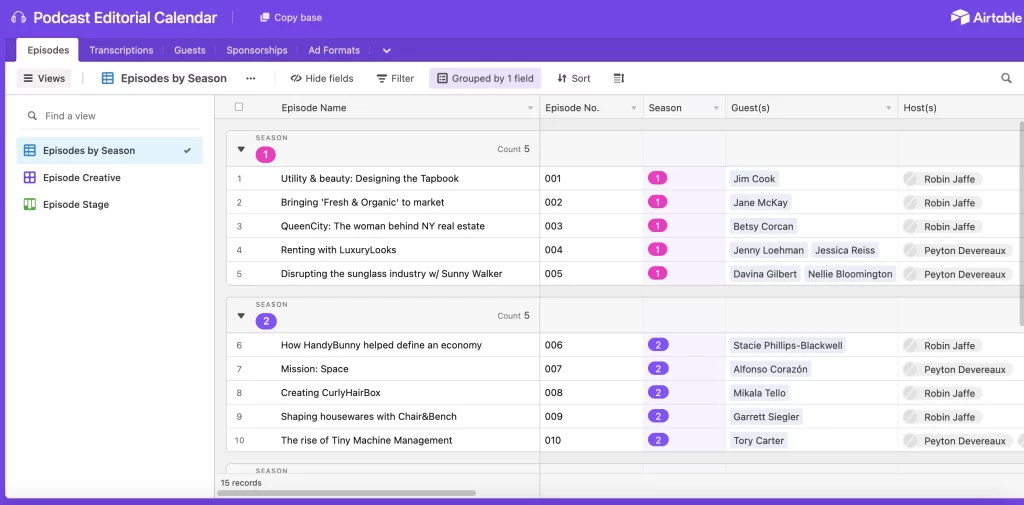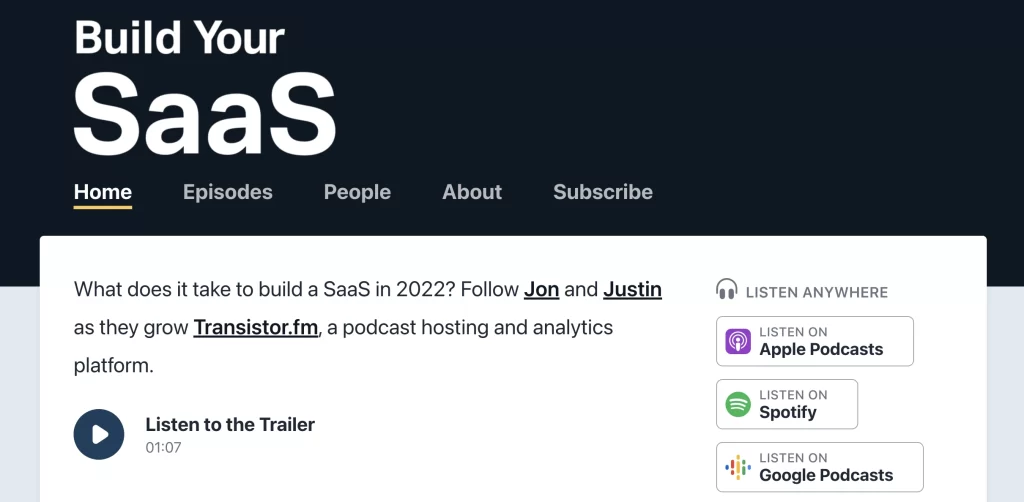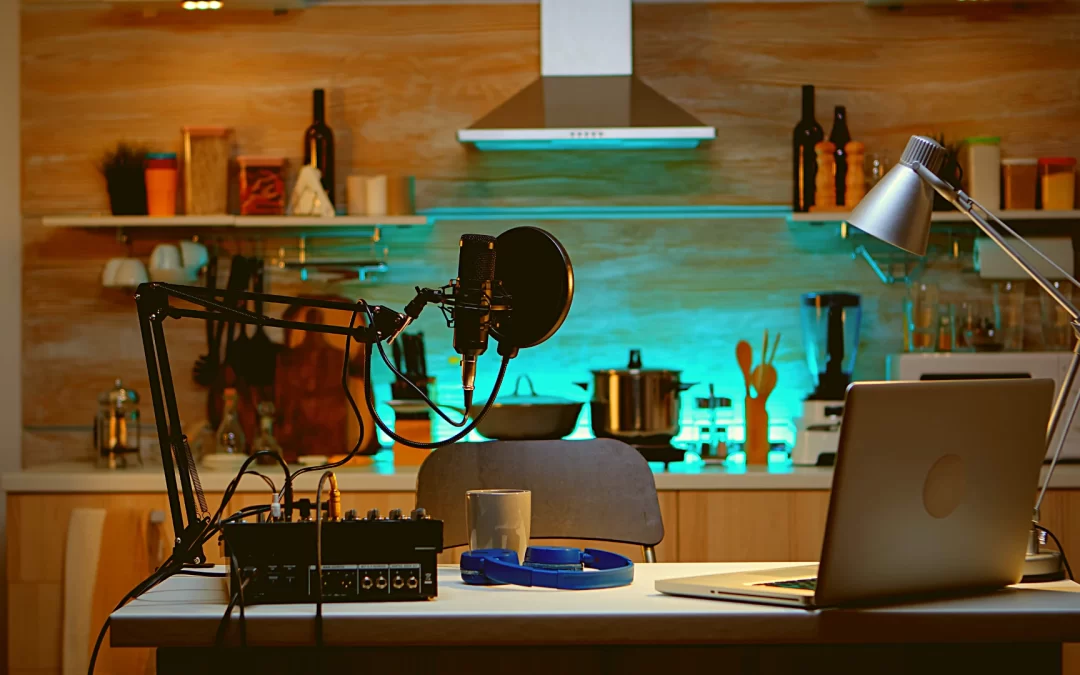I hear variations of the same question from prospective clients all the time: What do you need to start a podcast? I’ve tried to address this with my startup checklist for podcasts.
But now, I believe we have to go beyond the basics because there are specific pain points in the podcast development process that can hinder and stall your podcast before it’s even launched.
So, here are four things beyond the basics you’ll need to get started. And for those already in the trenches, this should help you improve your podcasting efforts, maintain your show, and grow your podcast organically.
Design for promotion
It starts with the podcast cover art and maybe a logo, but it doesn’t end there. Podcasts require promotional assets that come in all shapes and sizes.
For example, a video podcast may need a graphics template to display the show name, your brand logo, and the names of each participant. That template might include a title, end screens, animations, and transitions.
Here’s the kicker: That graphics package will need to be transposed to multiple platforms, including YouTube, Twitter, TikTok, and Instagram.
In the podcast development process, I ask my clients to plan for these things and scale up or down based on their budgets and ambitions.
But it’s hard to think about graphics when you’re focused on what story you’re trying to tell and how to enhance your brand through audio.
That’s why I want to emphasize the importance of working with designers from the start. Podcast listeners are notoriously finicky, but they’ll give your podcast a shot if you’re sharing well-designed assets.
But, more importantly, if you’re working on designs from the beginning, you won’t be slowed down looking for approvals as you begin the production of your podcast.
Editorial processes
For creators and companies new to content creation, it’s imperative that you have an editorial process in place.
An editorial process includes a progression of steps from idea to publication. Along those steps, you might include things like recording, editing, production, approval, publication, and distribution.

An editorial calendar helps here. It also helps identify who will handle each task associated with your podcast. So you should know who’s editing your podcast, who needs to approve the idea and the audio (and maybe video), and who will publish and distribute the podcast.
And you should know the timeline for that process.
A steady source of inspiration
Your podcast editorial process should also incorporate how you find inspiration for episodes. I’ve found that the idea-creation process is haphazard. Many of us are operating on vibes only. That’s not strategic, nor is it helpful if you’re trying to improve your brand favorability.
Instead, I suggest taking the route of my client Khalida DuBose, who spent time putting together a list of all the pain points her customers were experiencing and addressed each pain point in an episode of her show. That is no different than keyword planning.
The important thing is that she had a list of dozens of episodes to work on before she even started. And as she continued her podcast, her clients and guests gave her more inspiration to produce episodes.
So as part of your editorial process, you’ll want to know how you’ll source ideas to keep your podcast going. Some good places to look for inspiration include:
- Your customers and competitors
- News in your industry
- Research and trends
And those categories can then be further broken down into specific locations. For this new business owner, that might look like customer surveys, the articles feed from Bloomberg’s audio reporter Ashley Carman, Edison Research, and more.
I know when I’m looking at those sources, I might find inspiration for my own content creation. You should know where your inspiration comes from, too.
Website
Your podcast can be the crown jewel of your content marketing strategy, but it needs a home base to flourish. That’s where your website comes into play.
A podcast website allows you to improve your brand’s SEO, boost your blog, and infuse your other marketing efforts with content, whether that be a newsletter or your social media profiles.
So having a presence on your brand site is critical to housing all of that content.
Like the design, podcasters must think about their website from the beginning.
An easy way to implement a podcast on a brand site is by incorporating it into your blog or creating a blog for it.
Podcasters can also use their hosting platform to create a website for them. For example, I use Transistor as my host, and they provide templated websites like this.

Podcast host websites are often limited. However, they come free with your hosting service and are automatically updated as you publish your podcast, which saves time and money.
There are also alternative podcast website builders like Podcastpage.io that produce pretty websites and have advanced tools for SEO.
But don’t overthink it. You just need the basics to get started:
- A blog for separate episode pages
- An about page
- Biographies of your hosts
- How to become a guest on the show (and intake forms)
- Contact information and links to your work
You’ll do well if you already have a logo and cover art to get this done (which is why design comes first!).
Summary: What do you need to start a podcast?
We all need microphones, audio editing software, music, and a storytelling framework. But we also need a foundation to ensure each podcast can launch and grow successfully.
Building your podcast with design in mind ensures that you’re accounting for the first hurdle in getting someone to choose your show. And much like bad audio, it’s hard to overcome bad design.
Second, having an editorial process is vital to getting your show off the ground and maintaining its longevity. It’s also a good antidote for burnout.
Lastly, you’ll need somewhere to house all the wonderful content you produce. Why not own it and benefit from the SEO value podcasts provide?
That’s a wrap for this month. Let me know your thoughts, feedback, or questions on your branded podcast by leaving a comment or reaching out to me on Twitter or LinkedIn. If you want more content like this in your inbox, sign up for my monthly newsletter here.

